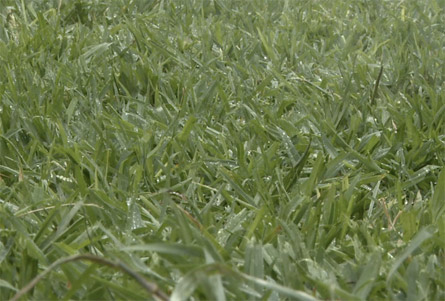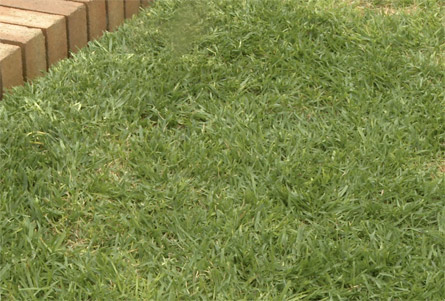lawns
lay turf rolls
QUICK TIPS:
1. Eliminate all existing grass and weeds
2. Cultivate the area 20-30cm deep
3. With a sandy loam for the top 10-20cm
4. Consolidate, moisten and lightly scuff the soil surface
5. Line the perimeter first
6. Lay rows across a slope
Laying turf is quicker and easier than growing a lawn from seed. And you can cut back on its greater expense by laying it yourself.
A lawn is a large garden bed for grasses. As ever, preparing the planting area beforehand saves lots of time and resources later. Prevent future competition from existing grass and weeds by eliminating them all first.
Cultivate your new lawn area 20-30cm deep. As this type of garden bed is walked over repeatedly, it's best if the top 10-20cm is a sandy loam: not so sandy that it loses water and nutrient too quickly; but not so clayey that the soil soon becomes compacted underfoot and the grass roots struggle to breathe.
The soil should however be consolidated with light rolling to produce a firm and even foundation. Take the depth of the turf rolls into account so the finished surface will meet flush with existing edges and the lawn grade to the sides or to a drain rather than the centre.
Spread a specialised premium complete lawn-starter fertiliser - lower in nitrogen than ordinary lawn foods while root development rather than leaf growth is key.
The surface should be moist and lightly scuffed with a rake to strengthen the bond between soil and turf. Start laying your chosen grass - preferably on the day of delivery before the turf can dry. Otherwise protect the rolls and keep them moist.
Lay one roll width around the perimeter first to minimise vulnerable joins at the edges. Then lay rows like bricks in a running bond pattern with staggered joins and perpendicular to any slope. Butt the rolls together tightly but flat to cover the entire area and fill any bumps or gaps with the loamy sand topsoil. Lightly roll the lawn to consolidate and increase root contact with the soil.
Water immediately - gently but deeply - and you're done.
Comments (0)
Tell our Plant Selector what you want & like and we'll search thousands of plant profiles for compatible matches
Special Offers

Plant of the Day
Cockspur Flower
Plant type: herbaceous soft-wooded perennial
H: 0.3m W: 0.5m
Sunlight: hot overhead sun to dappled light

Fast Facts
lawns
Choose the right time to mow: only the top third of the leaf blade should be cut to avoid stress that can open the lawn to weeds and disease.
Recently added lawns articles
Most viewed lawns articles
Get the Plant Selector's full features plus news, forums & competitions. Sign up, it's free.
Click here for more











You must be a member to share: Login or Register